Corinne Beardsley: Head On

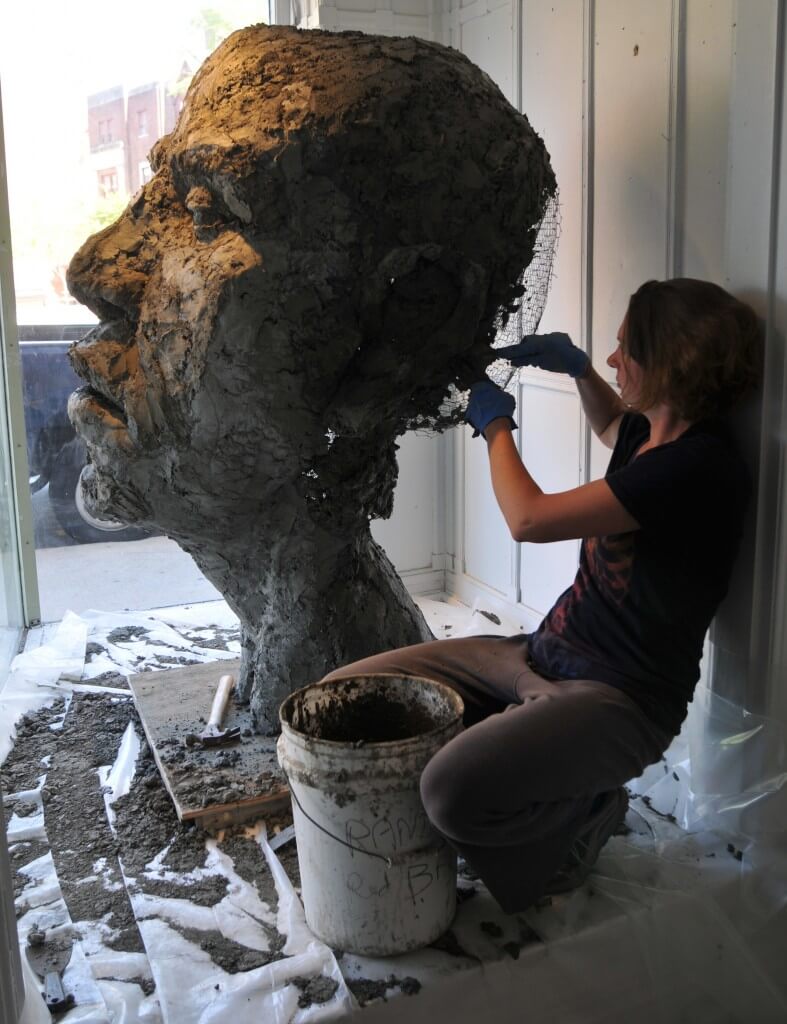
Corinne Beardsley is a fine artist, curator, producer, and educator. Her work is collaborative often inviting others into her sculptural, experiential, and performance projects. In 2012, Beardsley produced THE CAVE at Frontrunner Gallery curating a fictional post-apocalyptic space that included over 20 artists of various disciplines. Recently, she has focused on producing a style of larger scale sculptures with the HEAD ON exhibit.
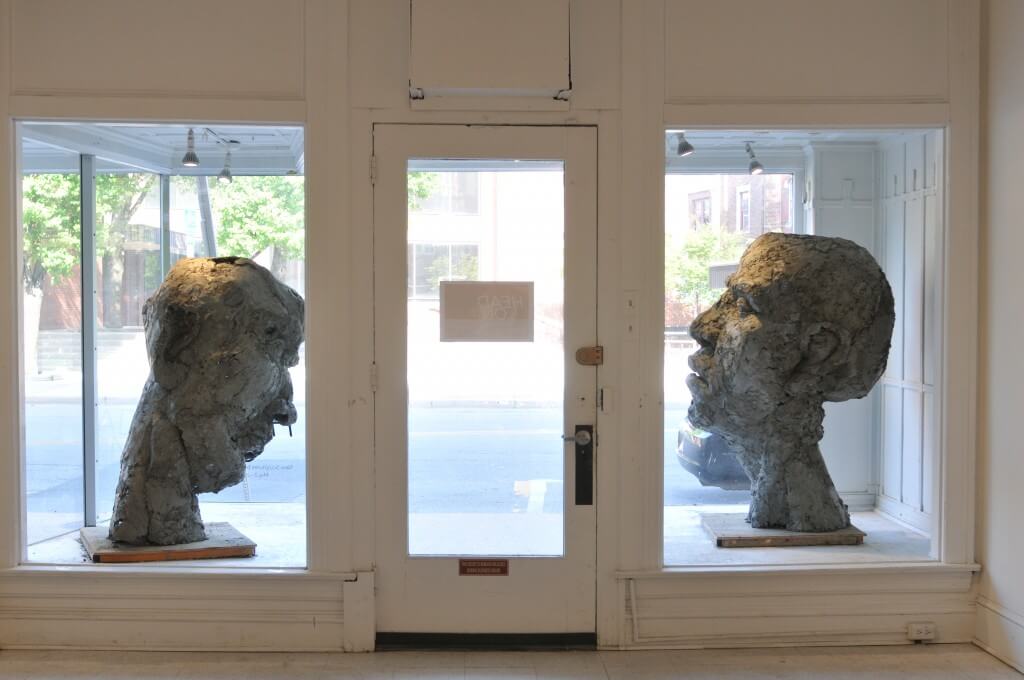
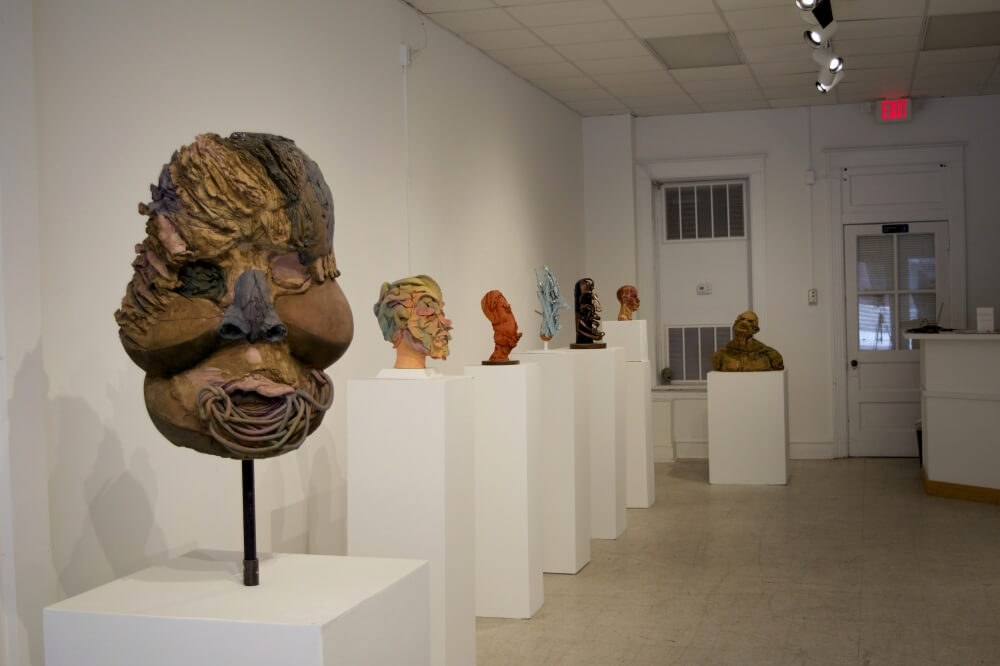
A solo show “Head On” of your recent sculptures is on display. You have said that you like how you can see faces in all kinds of non-human things like clouds, rocks, and city architecture.
I guess its just pattern recognition of two eyes and a mouth, maybe a nose. I like to collect images of these facial discoveries. They are found abstractions. It provides new shapes, and proportional organizations of the facial pattern. It’s very exciting to see all these characters around you all the time. Smirking. Winking, saying hello. Keeps it real. Or imaginary….
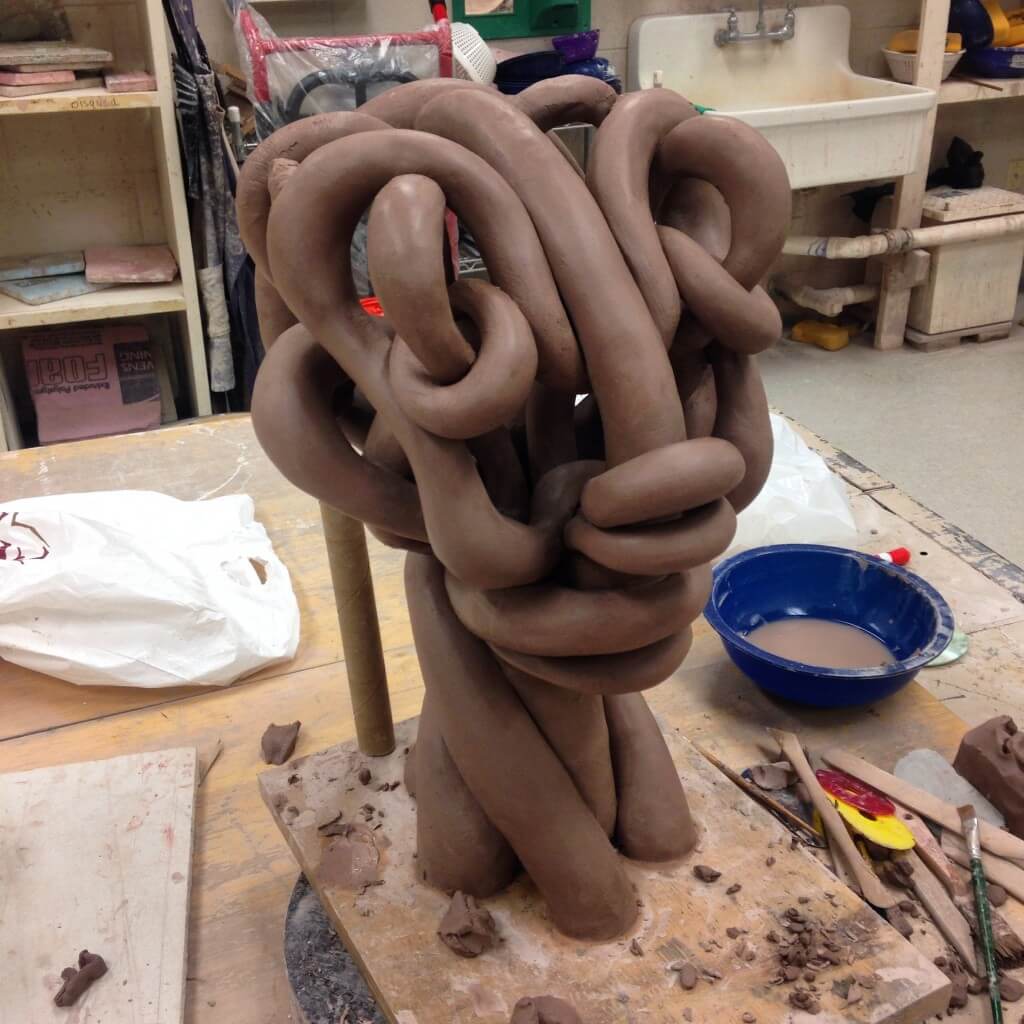
When I begin creating the sculptural masks, I throw, twist, push, and make a range of different physical actions on the clay. Clay is very malleable and can record spontaneous marks. These are perfect for intuitive and fluid responses. I become very charged while experimenting with making textures of clay by the physical touch. The unexpected reactions remind me of the infinite range of marks and motions you can make.

I gesturally move 15-20 mounds of clay and then collage, cut, and assemble the parts to create the facial pattern of two eyes, a mouth and some semblance of a nose. I try to make them barely look like a face. I want faces to exist in the undulations of clay but stay hidden in the same way I discover “faces in places”. It’s pattern recognition in a composition of texture and shapes. That act of discovery, creating a path for the audience to experience the work in their own way, is the artistic experience for me.
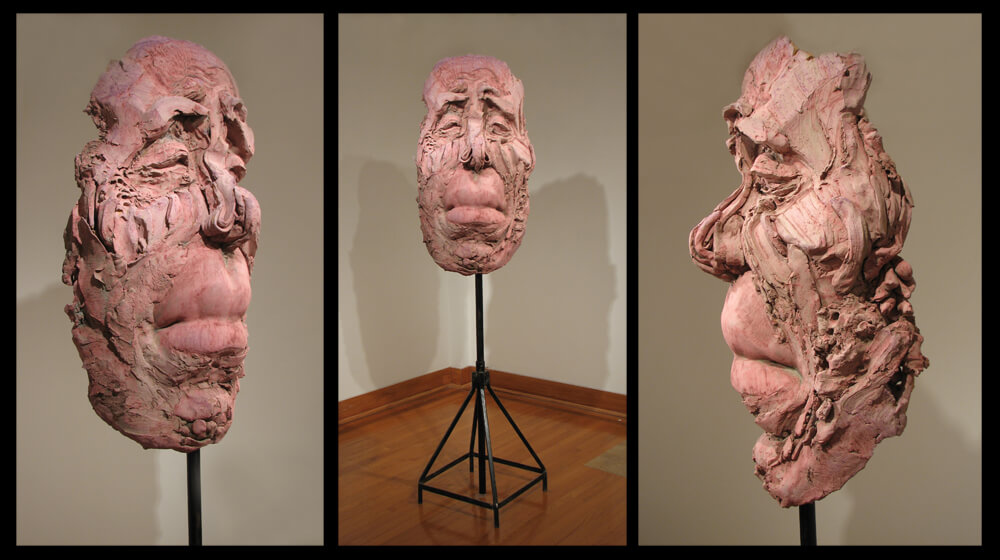
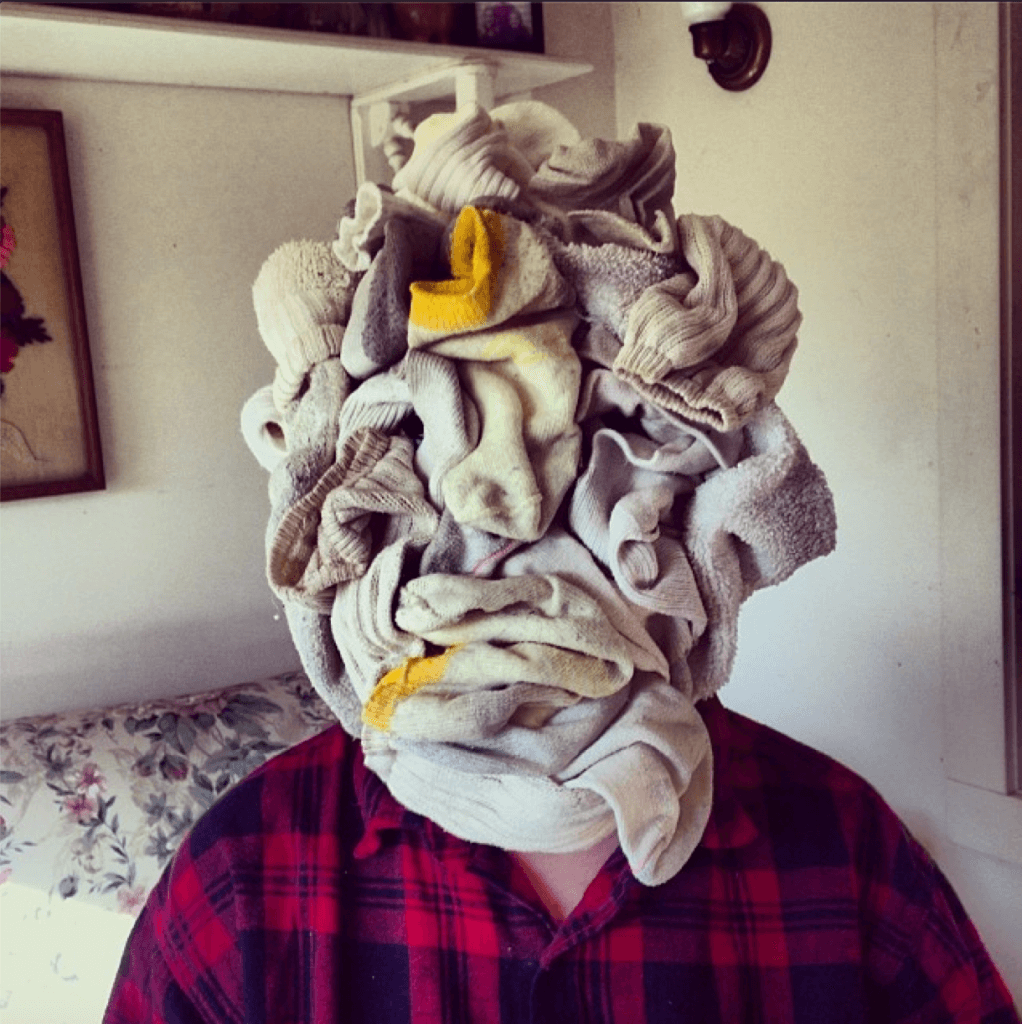
Tell me the story of The Cave at Frontrunner Gallery. What was your inspiration and experience during planning, production, and performance?
Initially the idea came to me because I was craving to work in a community. I felt confused about working so individualistically, and wanted to connect with the experience of why humans started making marks in caves in the first place. Why did they engage in this activity that was not for survival? To create some sort of record of their experience in a “sacred” space? Talking with friends about the idea and developing concepts that related to our present day experience it became this time capsule- “The Preserved Present”- projecting that a future audience would find this sculptural space after the apocalypse (it was 2012) in this sculptural space – with drawings, interactive robot mice, live characters and secret dioramas embedded in the cave walls, crystal caverns, and a re-birthing tunnel. During the performance nights, we had artists taking on different essences of The Cave such as a woman who had been living there, expressing her relation to the space, solitude and memories, as well as other characters who used the sensations of smells, movement and sounds to express their vitality. The best was the dance party on the closing night involving the community around The Cave. All the artists, our friends, and audience danced celebrating the space after practically living and working in the space for a month.
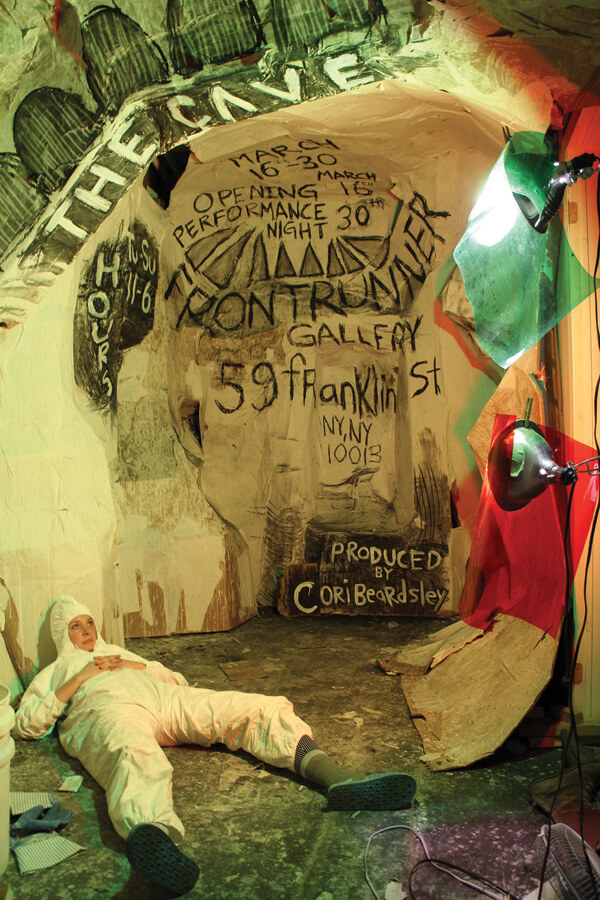

What gave you the idea of using cardboard and more commonly available/cheaper materials?
Producing The Cave project out of my own pocket made me think a lot about the materials and the cost to construct such a space. We did some material tests, seeing what would be the best way to construct an undulating, cavernous space. In NYC, cardboard is left on the streets weekly for recycling. Nicely tied together with string. It was a free material, replenishable, and it became important that we constructed The Cave out of collected materials from the neighborhood in Tribeca: newsprint from the fashion stores, plastic crystals from the spa’s window displays, bar benches for walls from the Lafayette Bar and Grill being torn down. It was an assemblage of materials disposed around our block. It connected us more to the space. Just as we were trying to simulate the experience of an artistic space created by prehistoric people who used common resources to make their marks on the cave, it was important to use accessible materials to express ourselves.
Tell me about how community and interaction has become important to your work.
Well I enjoy speaking in different languages. Theater, masks, costumes and dance are various forms we use to express ourselves. Immersive theater transports the audience into a narrative where their senses are completely absorbed, suspending disbelief. Stories incite reflection, responses to sensations, and encourage engagement with the work. Its important to meet visitors at each point as they traverse through the space. These cave spaces become playgrounds for discovery. When I moved from New York City to my hometown on the Eastern Shore of Maryland, I reflected on the few creative experiences I had as a child in this rural area. It was in walk-through haunted houses, built in abandoned houses or old chicken houses, where I became completely transfixed and transported in the adrenaline pumping journey of surprise, theater, and sensations. These were the moments that inspired me to pursue a life in the arts. So when I moved back I wanted to give this community; kids a transported experience. I had the opportunity to take over a storefront that the audience could walk through, so I built a cardboard cave installation with music and light experiences that added a dimension of traveling through time. Watching the kids discover the sculptural space and new sensations brought me pure joy.
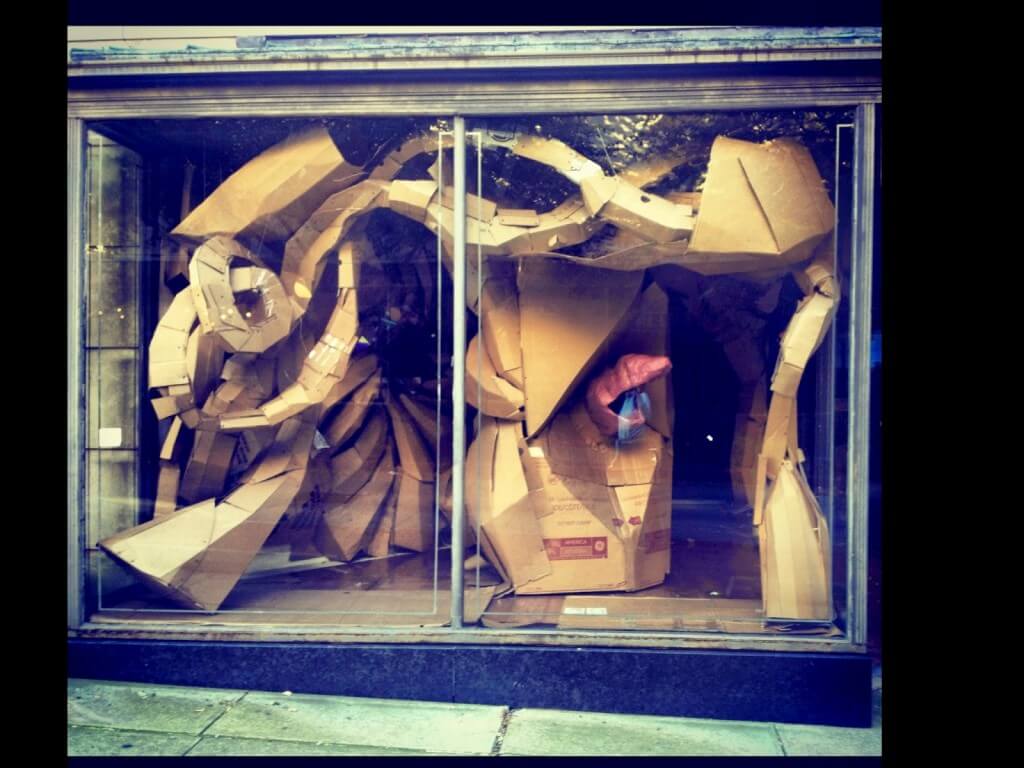
Salisbury is also void of street art. Through my involvement with the Public Arts Committee, I have been able to plan a public wheat paste wall in the Downtown area. Everyone should be able to express freely through art, and in public spaces. This is how we can spread ideas, consciousness, empathy, reflection, inspiration and beauty. The first installment of paintings wheatpasted on the wall was by my Drawing III class at the University of Maryland, Eastern Shore expressing “What is Art?”. We plan to invite other artists to put works on the wall, and I hope that others are inspired to share their ideas and voices freely. Art should not be contained in galleries and museums, with a certain accessibility. It should be experienced in our daily lives and not just created by those with a specific training.









Responses